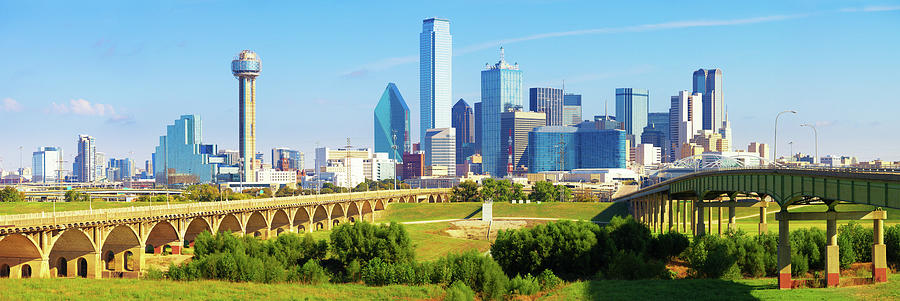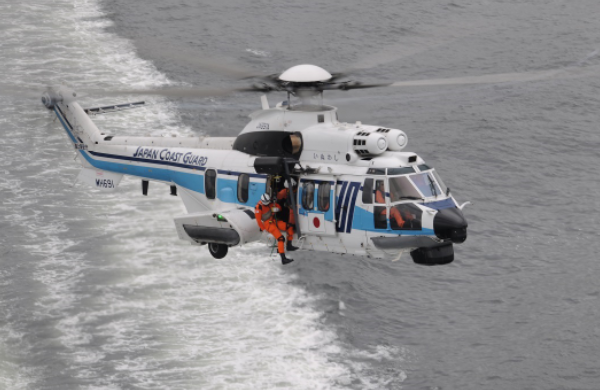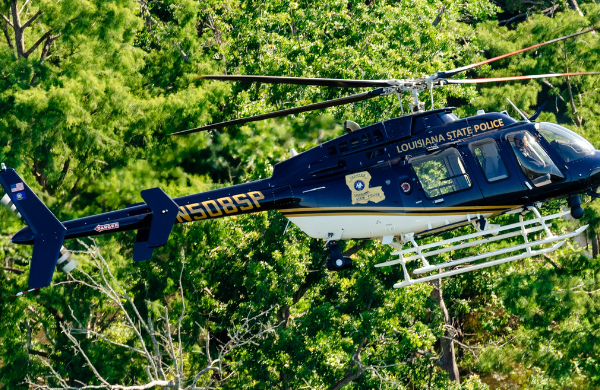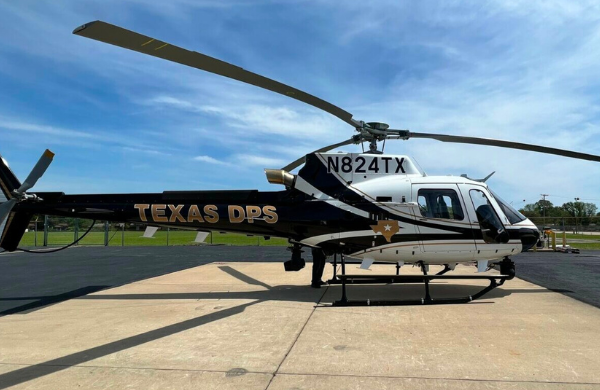The boots, the hats, the buckles and the smiles – they say everything is bigger in Texas. Indeed, the Dallas metropolitan area is one of the country’s largest. That said, air support of the city’s Police Department comes in the form of a unit just three aircraft strong and reflects the pattern seen at several police aviation units, where the complement of personnel has been pared to the bone as the wider force struggles with staffing. Even so, according to its supervisor, Sgt. Todd Limerick, the Dallas unit responds to around 30 calls a day and flies in the order of 2,000 hours annually.
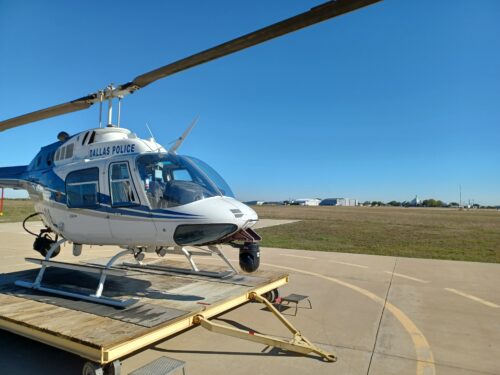
The Dallas Police unit’s two Bell 206s continue to deliver, but the high time on the airframes and the higher cost of maintaining older aircraft makes replacement a very attractive proposition.
Unusually, the unit does not differentiate between TFOs and pilots, and all aircrews are dual-rated, delivering the flexibility that it needs to maintain 24/7 cover. At present, for an officer to be considered for selection for the unit, they are required to have completed at least three years of patrol duty and hold at least a PPL (H). However, that policy is under review thanks to a lack of suitably qualified candidates, as Sgt. Limerick explained: “We had to get a waiver on the patrol duty requirement for the last guy to come in because although he was the only guy on the force with PPL (H), he was a little way short on the patrol requirement.” The problem appears to be that although successful candidates have their Commercial, Instrument and CFI ratings funded by the department, young officers seem to be more interested in buying a new truck than making an investment in getting the private licence.
Accordingly, the unit is reviewing its policy on recruitment and considering how it can first fund ab initio pilot training and, once trained, retain new pilots on the unit. Sr Cpl Steven Moore, with 18 years’ service as a pilot, the unit’s longest serving, argues that it all comes down to selection: “You must pick the right officer in the first place, someone who has already found that they enjoy police work and who will quickly realise the best way to do that work is in the air! Of course, that’s no guarantee they won’t be seduced by the offers from airlines or HEMS providers at some point down the line, but it’s a way to significantly reduce that risk.”
There are also logistics issues if the unit is to carry out the training in-house. At present, Sgt. Limerick is the only pilot on the unit’s strength with a current CFI rating and is already juggling competing duties as an administrator, advanced trainer and line pilot: “It may be that the right solution to get the kind of continuity of training that’s so important at the early, private level is to have it carried out at a flight school. On paper, that may appear to be more expensive, but it may turn out to be a more practical solution and result in a better pilot,” he said.
Future fleet
At present, the unit operates a three-aircraft fleet: two Bell 206s and a single 407GX. While the 407 is relatively low time, especially when compared with the venerable 206s. The 407 arrived as a donation from local record-setting pilot and benefactor, Ross Perot Jr., so it sports a very upmarket interior which it retains even after the addition of tactical equipment. Speaking of which, the G1000 avionics suite made the addition of a 15-inch tactical display a challenge but has resulted in a set-up that looks tailormade.
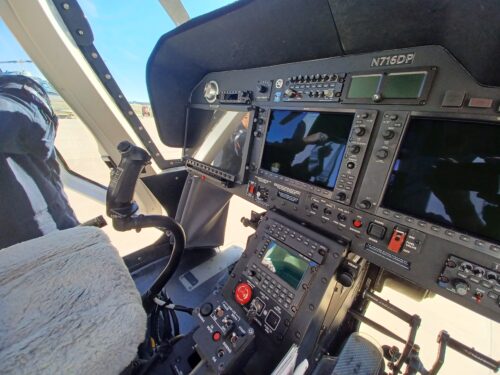
While the unit’s 407GX features a G1000-based avionics package versus the Aspen/clocks and dials of the Bell 206s, the tactical side of the office is identical. Note the holster for the dispatch system laptop.
On the other hand, the 206s remain firmly rooted in the ‘clocks and dials era’ although they were fitted with Aspen PFD/HDI units as part of the ADS-B in and out transponder retrofit. A perfect world fleet looks like the addition of two new aircraft, in all probability 407GX or GXi, and that ideal world scenario would see the retention of at least one of the 206s for use as a training aircraft. “We’ve had them appraised, and they have very little value on the open market,” explained Sgt. Limerick. “It would be great to have a non-line operational helicopter for training, so it would make sense to keep commonality by seeking a Bell-based solution. I like the H125, I really do,” added Sr Cpl Moore, “they have a lot of advantages for police work, and that’s why so many have gone that way. But there are some issues with parts supply and cost which don’t seem to affect 407s as much plus it’s a good idea to keep commonality where we can.” Of course, like all units, the team at Dallas have to compete at the funding trough, so when the funding for that level of fleet replacement will come to pass is unknown, as Sgt. Limerick explained, “All we can do is keep demonstrating the cost/benefit ratios of re-equipping to the powers that be and hope that they sign off on the funding or find a way to make it work.” This is not to suggest that the unit is short of operational funding, far from it, recently adding full NVG capability. It is a question of how to create the cash for large multi-year capital investments that presents the challenge, a tune familiar to publicly-funded operators the world over.
Self-dispatch capability
One of the things that marks it out as different from most air units is that the Dallas team can access the same situation software used by the ground units. “It took a while to get it to where we wanted it to be, and the early versions were kind of clunky, but now we’ve got a tablet-based system that is stowed in purpose-built pockets when not in active use – as was proven, so tragically recently, rogue tablets are not a good thing in a helicopter cockpit. Through the system, the units’ crews can get the wide view picture, which has improved response times and brought several benefits: “Think of all those times when you’ve just rolled off the power after landing, and that’s when you get the call from dispatch,” said Limerick, “that cycle wasting doesn’t happen nearly so much now.”
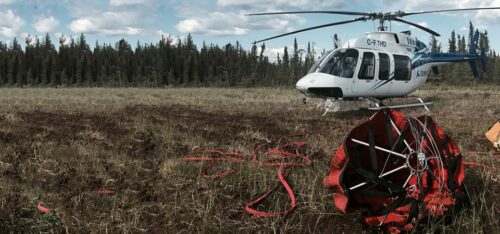
Operators like Canada’s Summit Air have shown that the 407 mated with a bucket delivery system is an effective firefighter – a capability the Dallas PD unit plans to add to its repertoire in 2024.
Firefighting support future
Another coming string to the Dallas Police AU bow is undertaking firefighting operations. “You might be surprised to learn that in the northern part of the state, we have no cover for fire or search and rescue,” says Sr Cpl Moore, “All of the assets are down south, so if they are needed, there will be a significant delay in getting the assets to an incident.” I was also surprised to learn that Dallas has one of the largest wooded areas in the United States, and parts of it are inaccessible by surface means, which could have severe repercussions as the climate changes. “This programme is moving along,” says Sgt. Limerick, “We hope to be where we need to be in terms of equipment, training and proficiency by this time next year.”
Police work now, firefighting soon, and perhaps search and rescue in the future. It appears then that not everything in Texas is bigger; it just seems that way.


